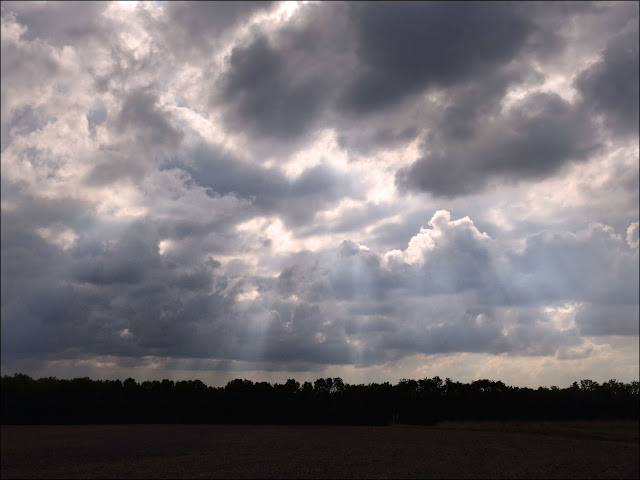We don't really do Halloween in England, possibly because our farmers don't grow a surplus of pumpkins which they have to get rid of at this time of year! So when I was a child I'd hardly heard mention of All Hallows' E'en. In more recent times the supermarkets have been only to happy to sell you a witch's outfit, some spooky spiders' web or a zombie mask, all tastefully made in the finest plastic the petro-chemical industry can produce.
But do we like to be scared out of our wits by supernatural happenings? Indeed we do, indeed we do. I spotted this strange weather-vane, suitably backed by a malevolent sky, in a Hertfordshire village. What can it mean? Does a witch dwell within, casting her spells to control the weather? I was too frightened to knock on the door and enquire! I hurried by without, I hope, being noticed.
Meanwhile here's a book that has somehow slipped unnoticed by me for many years. But a friend told me it was good and Penguin publish it under their Modern Classics banner so I thought I'd investigate.
We Have Always Lived In The Castle - Shirley Jackson
The rather Gothic house on the cover, pictured at dusk beneath threatening skies, should be enough to tell you that this is a suitable story to be reading at Halloween.
There are no zombies, vampires or ghosts stalking these pages: nothing more scary than two young women, their cousin, an old man and some neighbours, in fact. The main characters have a wide range of psychological and mental problems between them and at least one is a mass-murderer, but they are the ones we are persuaded to identify and sympathise with. Meanwhile the neighbours behave as any rational human beings might, i.e. with cruelty, vindictiveness and violence borne of irrational fear. A jolly little party then.
In this strange alien world - 1950s small town America(!) - things are never quite as they seem; the story has a Fairytales Grimm atmosphere to it, the innocent commit crimes, the crazy speak the most sense, those who try to help cause untold trouble, the wicked help and the reclusive see the world more clearly than those on the outside. It all reads like some elaborate metaphor or fable whose exact meaning is just beyond ones grasp.
The writing is entirely beautiful even if some people find the plot rather lacking in substance. I didn't, though I did find myself suddenly at the end of the book wondering if I'd missed some vital clue. Which of course makes me want to go back and read it again.
Meanwhile back in Pumpkinland....
In this strange alien world - 1950s small town America(!) - things are never quite as they seem; the story has a Fairytales Grimm atmosphere to it, the innocent commit crimes, the crazy speak the most sense, those who try to help cause untold trouble, the wicked help and the reclusive see the world more clearly than those on the outside. It all reads like some elaborate metaphor or fable whose exact meaning is just beyond ones grasp.
The writing is entirely beautiful even if some people find the plot rather lacking in substance. I didn't, though I did find myself suddenly at the end of the book wondering if I'd missed some vital clue. Which of course makes me want to go back and read it again.
Meanwhile back in Pumpkinland....
Even when we do Halloween in England:
we don't do it very well!
Take care.
we don't do it very well!
Take care.























































